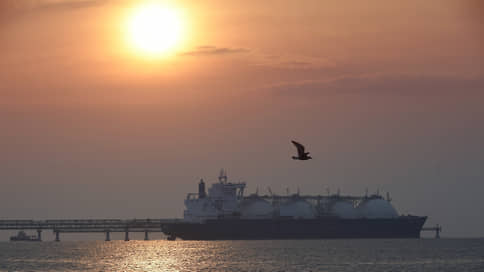Asia is in no hurry to buy LNG – Kommersant
[ad_1]

Market fears about a quick recovery in gas demand in China and rising LNG prices for Europe have not come true yet. The price of spot LNG for supplies to Northeast Asia fell below $360 per 1,000 cubic meters, the lowest since June 2021. Demand for LNG in the off-season from key consumers on the Asian continent is still weak. This allows EU countries to pick up cargo and calmly fill gas storage facilities in preparation for the coming winter. Analysts, however, do not rule out that the situation may change in the coming months.
June futures on the Platts JKM index, which reflects the cost of spot LNG supplies to Northeast Asia, fell to $9 per MMBtu, or about $360 per 1,000 cubic meters, which is the lowest level in the last two years, Platts reported.
Constantly weak demand in the spot market is explained by the fact that consumers have enough supplies under long-term contracts, and fuels that compete with gas are cheaper. The market was expecting a quick recovery in China’s gas demand after the country relaxed its COVID-19 measures in late 2022. This, as many market participants and analysts feared, would lead to competition for LNG cargoes with Europe and a new round of price growth. But demand for LNG in China has been below market expectations, and the country continues to rely on coal and renewable energy to cover consumption. Japan and South Korea are also not buying much LNG yet, freeing up cargo for Europe.
LNG purchases from a significant part of Asian importers, such as India, Pakistan, Bangladesh, are very price sensitive, and as spot prices decrease, demand from these countries can be expected to grow, independent expert Alexander Sobko notes. In his opinion, the first signs of an increase in imports have already appeared. “Growth in demand in these areas, including China, is quite likely, which can also support spot prices for LNG, which are already even lower than for some long-term contracts linked to oil quotes,” the analyst believes.
Platts estimates that modest growth in demand from buyers in South and Southeast Asia has not outweighed fundamental changes in the balance sheet in Northeast Asia, where consumption so far is about 44mcm/d less than last year and 55mcm per day less than the average for the last five years.
This allows Europe to import large volumes of LNG, while gas demand on the continent also remains moderate due to warm weather and high UGS stocks (61.76%, according to AGSI+ as of May 7). In order to fill the storage facilities to the standard level of 90% by the end of October, the EU countries need to purchase about 35 billion cubic meters of gas.
Sergei Kondratiev of the Institute of Energy and Finance notes that demand for LNG in East Asia remains weak in 2023, partly due to the slowdown in the region’s economies. Thus, in the first quarter of 2023, industrial production in China grew by only 3.9% yoy, in Japan it fell by 2% yoy, in South Korea — by more than 9% yoy. The industry remains one of the main consumers of energy resources in these countries, and the weak performance of the sector (including due to reduced exports to the US and the EU) negatively affects energy demand.
Additional pressure on demand for gas in the first quarter of 2023 was exerted by the ongoing coal pivot in China: in March, coal production in the country grew by 4.3% yoy, while imports grew by 1.5 times. Nevertheless, the demand for LNG in China is still growing: in March, imports grew by 17%, and in April, according to preliminary data, by 16.2%. “I think that already this summer the demand for LNG in China will steadily exceed last year’s level against the backdrop of an improvement in the economy and a slowdown in the coal renaissance,” Mr. Kondratiev believes. “It is likely that in the coming months we can return to a situation where the Asian market will be premium for LNG producers, and prices in the EU will be lower than in Asia. This can also be evidenced by the redirection of LNG flows from the US to the Asia-Pacific region: in March 2023, supplies from the US to China increased by 3.8 times,” the analyst says.
[ad_2]
Source link





